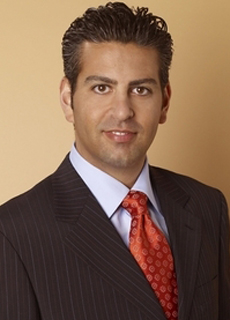REQUEST AN APPOINTMENT
TESTIMONIALS
The Difference Between Femto-LASIK and PRK
With so many new developments in healthcare and technology in the past decade alone, patients now have access to an unprecedented number of options in treatments for everything from acne to cataracts. The field of ophthalmology in particular has witnessed some of the most exciting breakthroughs in the medical field, from bionic implants that are helping formerly blind patients recover partial vision to the technology known as keratopigmentation, which allows ophthalmologists at the Kuwait Medical Center to change a patient’s eye color for cosmetic purposes.
Which Refractive Eye Surgery Is Right For Me?
Femto-LASIK and PRK are known as refractive surgical procedures where the shape of the cornea is altered to restore visual acuity to patients suffering from farsightedness, nearsightedness, and astigmatism.

Femto-LASIK has exploded in popularity over the last decade and has become an incredibly common procedure for patients looking to shed their eyeglasses or contact lenses prescription for good. So how does a patient know which procedure to choose?
Femto-LASIK
The first step in determining whether a patient is a candidate for either Femto-LASIK or PRK is by scheduling a comprehensive eye exam. The surgery is a fairly straight-forward outpatient procedure, and most patients report almost immediate improvements in their vision.
In order to be a candidate for Femto-LASIK, patients must meet the following conditions:
- 21 years of age or older
- Stable vision (a prescription that has not changed for at least a year)
- Free of other eye diseases and infections
- Patients should be in general good health, as certain conditions like autoimmune diseases could interfere with proper healing
- Free of scarring or abnormalities of the corneas
- Patients should not be pregnant or nursing
- Appropriate pupil size (patients with larger pupils run the risk of a “halo” effect)
- The corneas must be thick enough for the ophthalmologist to create the corneal flap necessary in LASIK (patients with corneas that are too thin for LASIK might still qualify for PRK surgery).
Femto-LASIK is the bladeless, state of the art all laser procedure used at Beverly Hills Medical Center Kuwait to give patients the most modern and efficient option for refractive eye surgery available to date.
PRK
While Femto-LASIK and PRK surgery are similar in that both involve reshaping the cornea to correct refractive problems and require that patients meet many of the same conditions in order to qualify, patients that do not meet the corneal thickness requirement for Femto-LASIK may be candidates for PRK.
During a PRK procedure, an ophthalmologist skips the step of creating a corneal flap and instead brushes off the epithelial layer to access the cornea. During the initial eye consultation, the ophthalmologist will determine which procedure is the best option for the patient.
The results of PRK are usually permanent, with most patients reporting 20/20 vision within days of the procedure. Both are outpatient surgeries, and with proper precautions and follow-up exams, patients can expect to shed their glasses or contact lenses for good.
Contact Expert Ophthalmologists at Beverly Hills Kuwait!
Contact an expert ophthalmologist at Beverly Hills Medical Center Kuwait today! Call+(965)-222-89999 or schedule an appointment with an expert doctor online.
Next, learn more about What To Expect After LASIK.
















